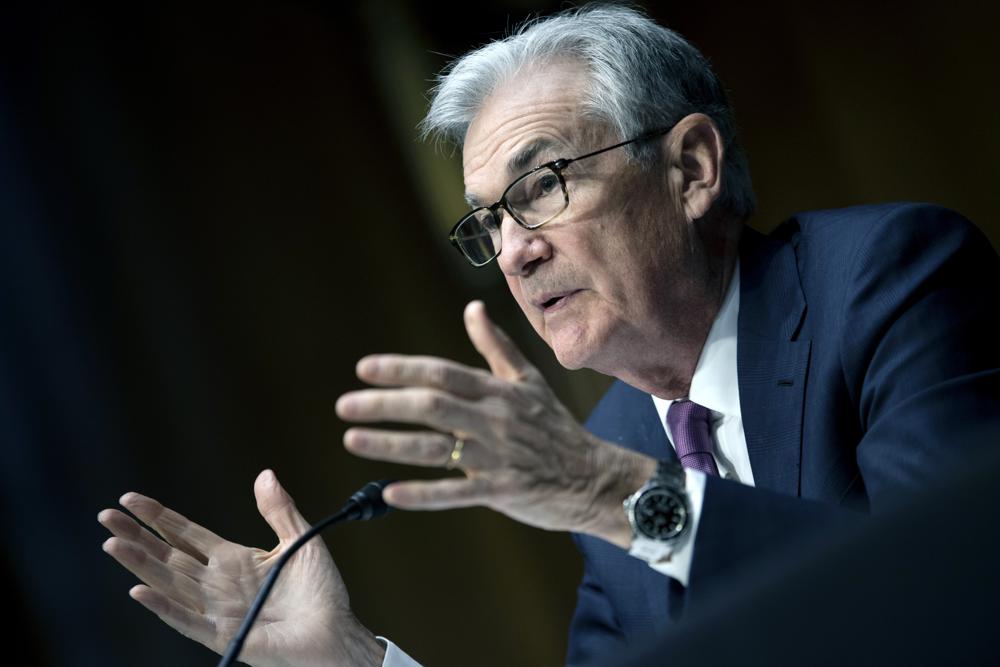Federal Reserve Chair Jerome Powell made clear Wednesday that the Fed will begin raising interest rates this month in a high-stakes effort to restrain surging inflation.
In prepared testimony he will deliver to a congressional committee, Powell cautioned that the economic consequences of Russia’s invasion of Ukraine are “highly uncertain.” He said the Fed will “need to be nimble” in responding to unexpected changes resulting from the war or the far-reaching sanctions that the United States and Europe have imposed in response.
The Fed is widely expected to raise its benchmark short-term interest rate several times this year beginning with its March 15-16 meeting. In his testimony, Powell provided little additional guidance about how fast the Fed would do so.
A rate hike next month would be the first since 2018. And it would mark the beginning of a delicate challenge for the Fed: It wants to increase rates enough to bring down inflation, which is at a four-decade high, but not so fast as to choke off growth and hiring. Powell is betting that with the unemployment rate low, at 4%, and consumer spending healthy, the economy can withstand modestly higher borrowing costs.
“With inflation well above 2% and a strong labor market, we expect it will be appropriate to raise the (benchmark short-term rate) at our meeting later this month,” Powell said. That rate is now pegged near zero, where it has been since the pandemic struck in March 2020 and the Fed responded by slashing interest rates to help support the economy.
When the Fed raises its short-term rate, borrowing costs also typically rise for a range of consumer and business loans, including for homes, autos and credit cards.
Powell acknowledged that consumer price increases have jumped far above the Fed’s target of 2% — inflation hit 7.5% in January compared with a year earlier — and that higher prices had persisted longer than expected.
“We understand that high inflation imposes significant hardship, especially on those least able to meet the higher costs of essentials like food, housing, and transportation,” the Fed chair told the House Financial Services Committee on the first of two days of semiannual testimony to Congress.
Still, he added that the central bank expects inflation to gradually decline this year as tangled supply chains unravel and consumers pull back a bit on spending.
Most economists agree that inflation will likely decline from its current high level. Yet they increasingly expect it to stay elevated. Rising prices are spreading beyond items that were disrupted by the pandemic — autos, electronics, furniture and other household goods — into broader categories of spending, especially rental costs.
Goldman Sachs has raised its forecast for inflation and now predicts that prices, according to the Fed’s preferred measure, will still be rising at a relatively high annual rate of 3.7% by year’s end. That is far above the Fed’s own most recent projection, issued in December, of 2.7%. When the central bank’s policymakers meet in two weeks, they will update that projection.
In his testimony Wednesday, Powell said the Fed will also begin reducing its huge $9 trillion balance sheet, which more than doubled during the pandemic when the Fed bought trillions of dollars of bonds to try to hold down longer-term rates. The Fed chair said only that the reduction would begin after rate hikes were initiated. Shrinking the Fed’s balance sheet has the effect of further raising longer-term borrowing costs.
In public statements, central bank officials have been debating whether to raise rates this month by a half-percentage point — an aggressive move — though most have backed a traditional quarter-point increase. Russia’s invasion of Ukraine has made a half-point increase even less likely.
The invasion of Ukraine has driven up oil prices by about 18% to roughly $110 a barrel, which will make gas more expensive. Some economists have forecast that average gas prices could soon reach $4 a gallon, up from a national average of $3.66 Wednesday.
Costlier energy will send inflation even higher than it otherwise would have been in the coming months, bolstering the case for Fed rate hikes. But more expensive gas also deprives consumers of money to spend on other things. This, in turn, will likely hold down consumer spending and potentially weaken the economy — a scenario that would usually discourage the Fed from raising rates.
And with Russia’s invasion likely to disrupt the U.S. and global economies in unpredictable ways, the Fed may not tighten credit conditions as much as had been expected. Wall Street investors now forecast roughly five increases this year, based on pricing in futures markets, down from seven rate hikes that they had predicted before the invasion.
Other than its effect on inflation, the war may have only a limited impact on the U.S. economy, analysts say, as long as it doesn’t significantly escalate. Only about 0.5% of U.S. trade is with Russia.
On Tuesday, the yield on the 10-year Treasury note tumbled to 1.71%, in part because financial markets now foresee fewer rate hikes. The yield also fell because investors around the world piled into Treasuries as a “safe haven” investment, pushing up Treasury prices and lowering yields.
(AP)











